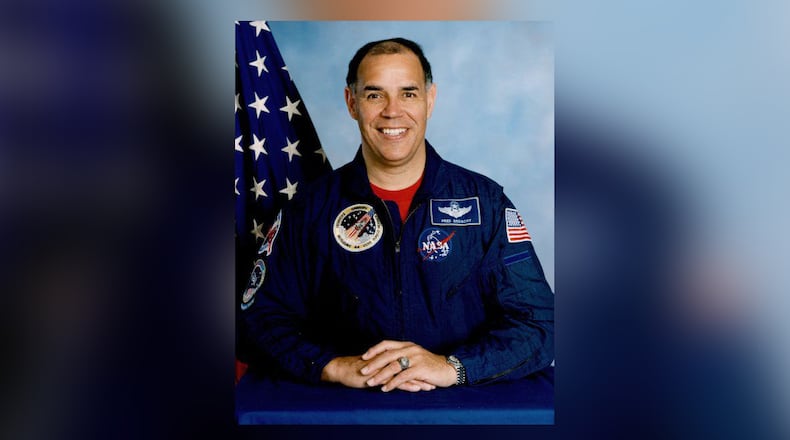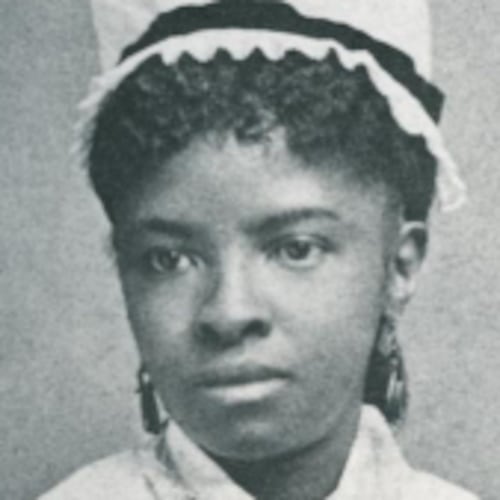Fred Gregory doesn’t need any more plaques.
“I could send you 10 plaques and it wouldn’t put a dent in all the ones I have laying around,” said the former Air Force test pilot, astronaut and NASA administrator. He was one of the first Black people selected to become an astronaut in January 1978, along with Guion Bluford and Ronald McNair.
Happily retired, Gregory has flown hundreds of different aircraft, overseen the United States’ involvement in the International Space Station, traveled the world and commanded multiple space shuttle missions. He has spent more than 450 hours in space.
“I was the only (African American) in my class at the Air Force Academy,” Gregory said. “And right after schools integrated in D.C., I was the only one in this formerly all-white junior high. I was in the first integrated Boy Scout troop in Washington.”
Gregory’s parents were teachers. His father, Francis Gregory, attended the Case Institute in Cleveland, later part of Case Western Reserve University. After graduating and teaching for a couple of years he went on to MIT, where he got a masters degree in electrical engineering.
“They had all kinds of friends. And those friends were at our house a lot. And there was one group of friends who talked with their hands and waved and talked about flying and excitement,” Gregory said. “And I’m like 5 years old, 6 years old. And I’m watching these folks and listening to how much fun they were having, and one of them offered to take me to fly.”
Years later, he learned that many of those friends were Tuskegee Airmen.
As Gregory considered applying to the astronaut program, he got a call from one of those old family friends.
“His name was Ben Davis, who I did not know was in the military,” Gregory said.
That would be Gen. Benjamin O. Davis Jr., commander of the legendary 332nd Fighter Group, also known as the Red Tails, and the U.S. Air Force’s first Black brigadier general.
“He called me and he said, ‘Fred, I want you to apply to the program for myself, and in honor of the Tuskegee Airmen,” Gregory said. “I’d never heard of the Tuskegee Airmen.”
Along with Davis’ entreaty, Gregory felt drawn to apply to the astronaut program by a clever ad campaign. Nichelle Nichols, who played Nyota Uhura in the original “Star Trek,” famously volunteered to help NASA recruit more diverse astronauts.
“The first time I met Nichelle Nichols, she was inside my television saying, ‘I want you to be an astronaut,’” Gregory said. “Others may claim she was looking at them, but no, she was looking at me.” He and Nichols would go on to become dear friends.
In January 1968, Gregory found out he had been selected as an astronaut. NASA Astronaut Group 8 was the largest and most diverse ever. The group included six women and three Black men: Gregory, McNair and Bluford.
The entire group became media sensations. Gregory was bombarded with letters of congratulations and commendations from government officials.
“A mail truck would come up and put a bag of mail at my house,” he said. “I have a house full of plaques because, everywhere I go, they give me a plaque. And keys to the city, or keys anywhere you want — I have one from Atlanta!”
In the summer of 1978, the group began training for the debut of the space shuttle program.
“When I launched for the first time, to me, it was more like a training session,” he recalled. Simulations tended to focus on what could go wrong, so it was smooth sailing on his first eight-minute ride into space.
“From Earth, you can only see a certain part of the heavens,” Gregory said. “It just blows your mind. You’re looking out and it’s just carpeted with stars and you realize that some of them are close — maybe only 50 light years away — and some of them are billions of light years away. We were just overwhelmed by the beauty, the vastness, the potential, the ‘where do we go next on this journey?’”
Gregory’s career as an astronaut spanned from 1978 to 1991, three shuttle flights and 456 hours in space. He was one of the flight controllers at the Johnson Space Center during the space shuttle Challenger disaster, which claimed the lives of all seven crew members on board, including mission specialist Ron McNair, in 1986. (A year later, DeKalb County’s Walker High School would change its name to Ronald E. McNair High School.)
Following his final shuttle flight, he became an associate administrator at NASA overseeing the Office of Safety and Mission Assurance. After nearly a decade in that position, Gregory had a brief stint overseeing the Office of Space Flight, the office responsible for the space shuttle and International Space Station Programs, before he was appointed as NASA’s Deputy Administrator. He retired in 2005 at age 64.
Now 80, Gregory still sounds the part of a commanding officer. He is good-humored and curious, quick to ask questions as if he’s not the most interesting person in every conversation he has.
“I think brilliance and the ability to understand concepts, to push the barrier, sometimes comes from a person who hasn’t been told ahead of time that it’s impossible to do something because that’s now how we’ve done it in the past,” Gregory said. “You get a mind that is free to wander, create and discover — that’s the kind of mind you want.”
He reflects on his past with a sense of awe at the stories of flight and adventure he heard at the knees of Tuskegee Airmen and a feeling that he helped carry a torch lit by those pioneering pilots.
“Heck no, I didn’t light this torch. It was handed to me by the Tuskeegee Airmen for the work they had done,” Gregory said. “I had a sense of relief when I found out that no, I wasn’t the first one. It was following in the legacy of folks earlier than me who had done even greater things and broken more barriers than me.”
BLACK HISTORY MONTH: Throughout February, we’ll spotlight different African American pioneers ― through new stories and our archive collection ― in our Living and Metro sections Monday through Sunday. Go to AJC.com/black-history-month for more subscriber exclusives on people, places and organizations that have changed the world, and to see videos on the African American pioneers featured here each day.
About the Author
The Latest
Featured


